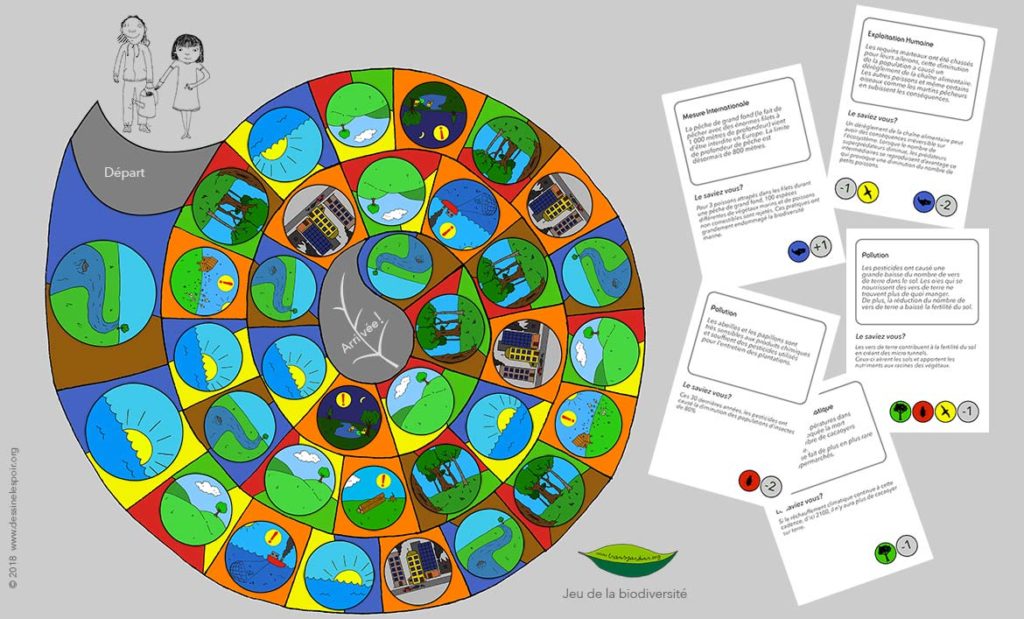Designing Hope has created a set of concrete educational and pedagogical tools for children in the local communities where the gardens are located. These educational tools take the form of group games and aim in particular to raise their awareness on malnutrition, the need to protect the environment and biodiversity:
each player or group of players returns a token to define the team to which they belong: insects, mammals, trees, fish or birds. The game board is composed like a game of goose, but each square refers to a particular ecosystem (ocean, plain, forest, river and city). The participants have to throw a dice and move their token to the game board. If the square the player has landed on is the same as his or her team (for example, the fish lives in the “ocean” and “river” squares), then the player can move on to another square.
If the square does not match his team, then he must remain on it. On the other hand, if the player falls on the “city” square, then he must move back one square because the city is not an ecosystem suitable for living beings. The game board is also made up of “events” squares.If the player falls on these, he or she draws a card with a bioclimatic event affecting one or more families. For example: “Overfishing leads to the mass extinction of fish species. As a result, all the fish move back 2 squares. This game is a simple and fun way to raise awareness of biodiversity conservation.

The classic domino symbols are replaced by fruit and vegetable symbols. This game was hand-painted at the Laafi Centre in the town of Koudougou, Burkina Faso, by an association that is a partner of Dessine l’Espoir. This game aims to make children aware of a healthy and balanced diet.
Dessine l’Espoir has designed a game whose aim is to introduce the youngest children to the principles of balanced nutrition. With a metal card game also made in Burkina Faso and painted by an artist from the Laafi Centre in Koudougou, the children manipulate and learn the names of the moon food categories, especially vegetables.

- A game about nutrition: through a card game, the children learn what the body needs in order to stay healthy. What eating practices can prevent certain diseases? On the other hand, which eating practices favour certain diseases? This game highlights the benefits of certain type of foods, particularly fruit and vegetables on the body.
- A game for 7 families about vitamins, minerals and the benefits of each food.

- A biodiversity treasure hunt: This treasure hunt was created in 2020 as part of the “Learning in the vegetable garden” programme developed by the Dessine l’Espoir association.
It aims to offer a fun and educational visit of the Traversine garden in Paris. The treasure hunt has four teams, themselves made up of 2, 3 or 4 visitors. Each of these teams is symbolised by an Element: Fire (yellow team), Air (green team), Earth (red team) and Water (blue team). During their visit, the children are accompanied by the four Guardians of the Elements, Fuoc (Fire Guardian), Aura (Air Guardian), Terrà (Earth Guardian), Aïga (Water Guardian). These Guardians are an illustration of the fragile balance found in nature and allow children to learn about environmental protection, agro-ecology and permaculture in a playful way. The children have to face several challenges that are located at each components of the garden in order to solve the final enigma and restore the balance of the elements. This treasure hunt is adapted according to age and will also soon be designed for gardens in Africa.

